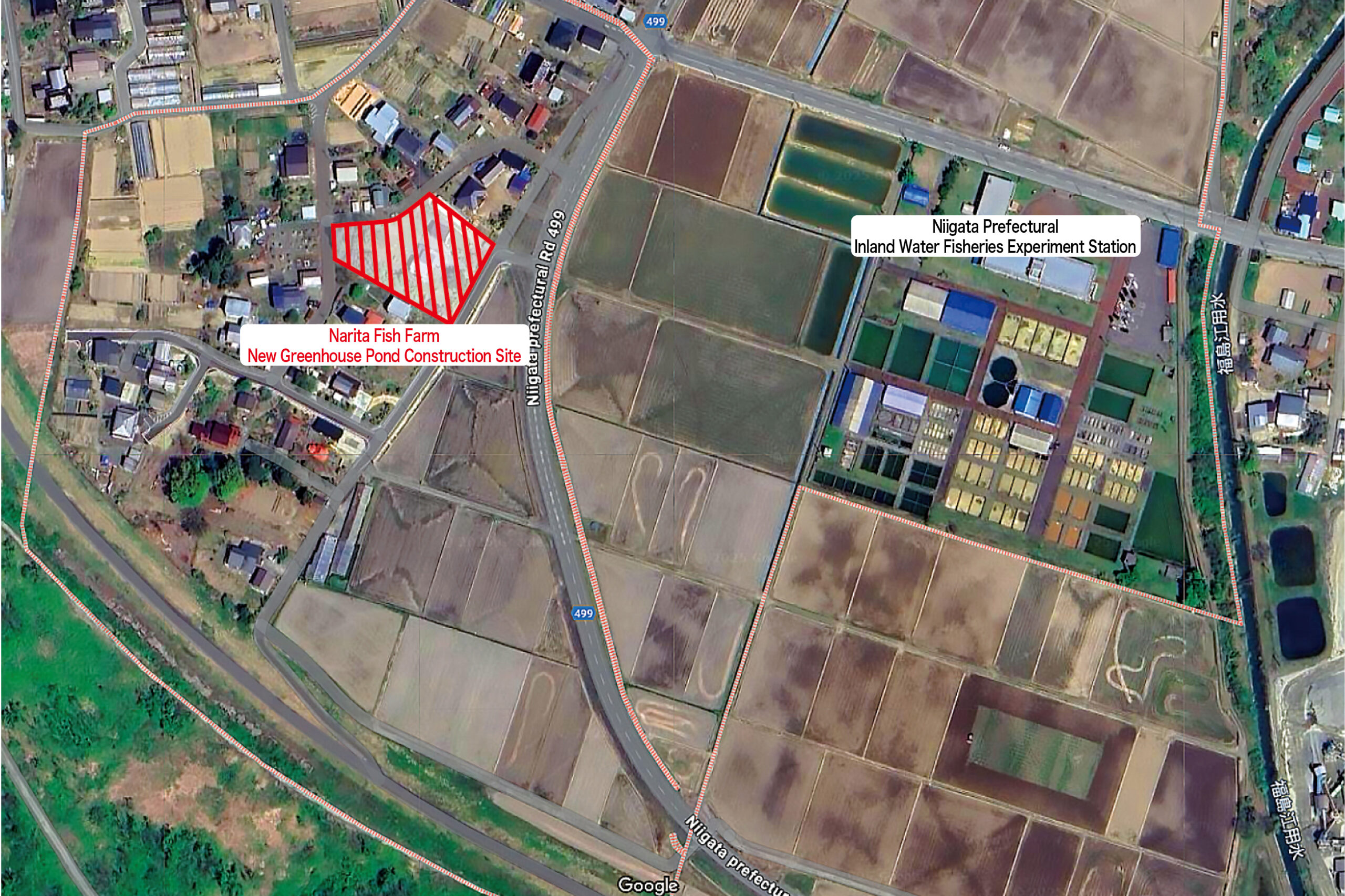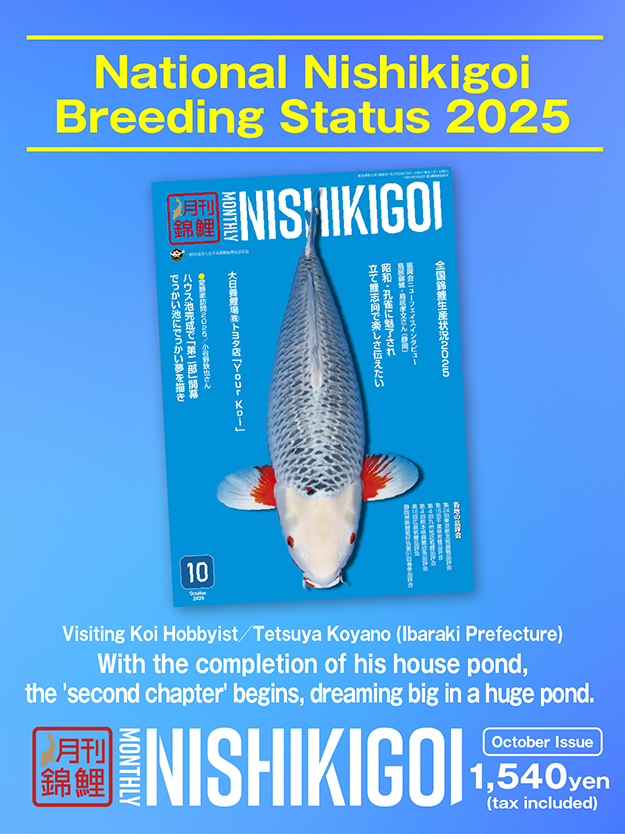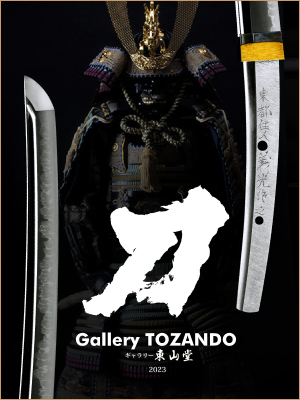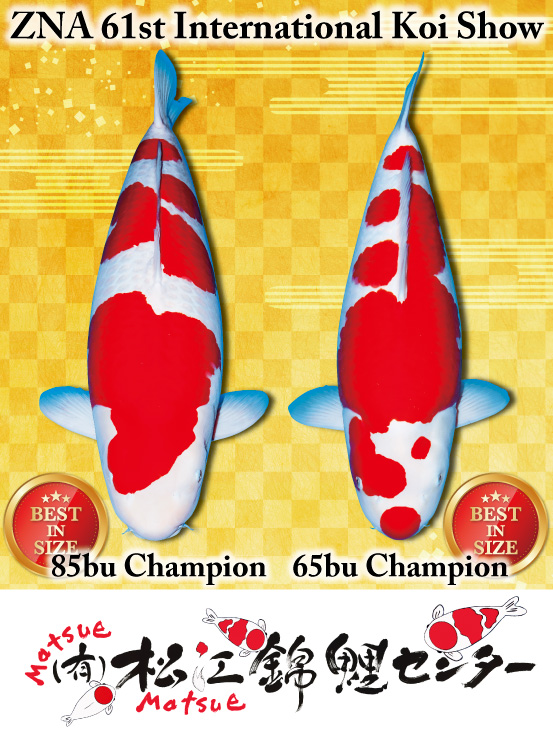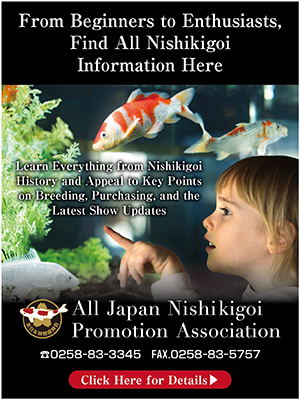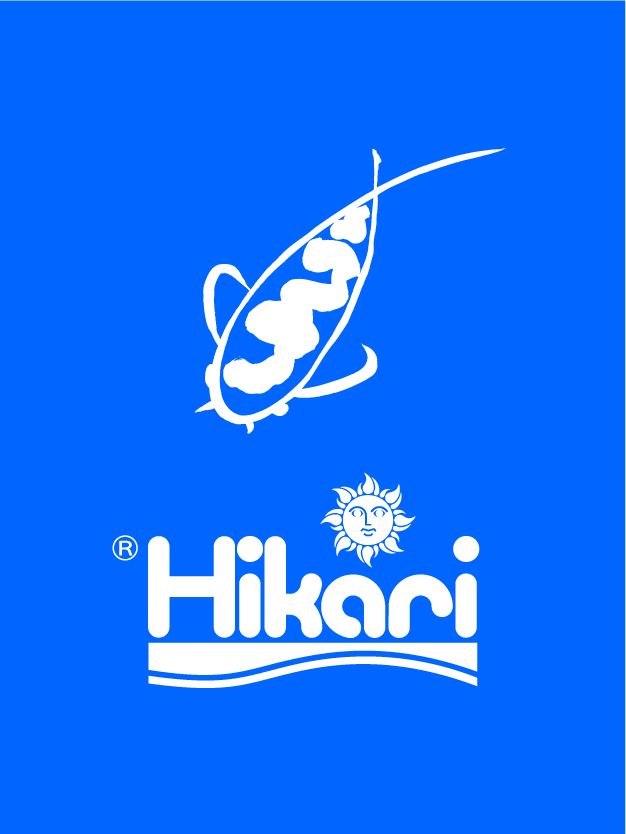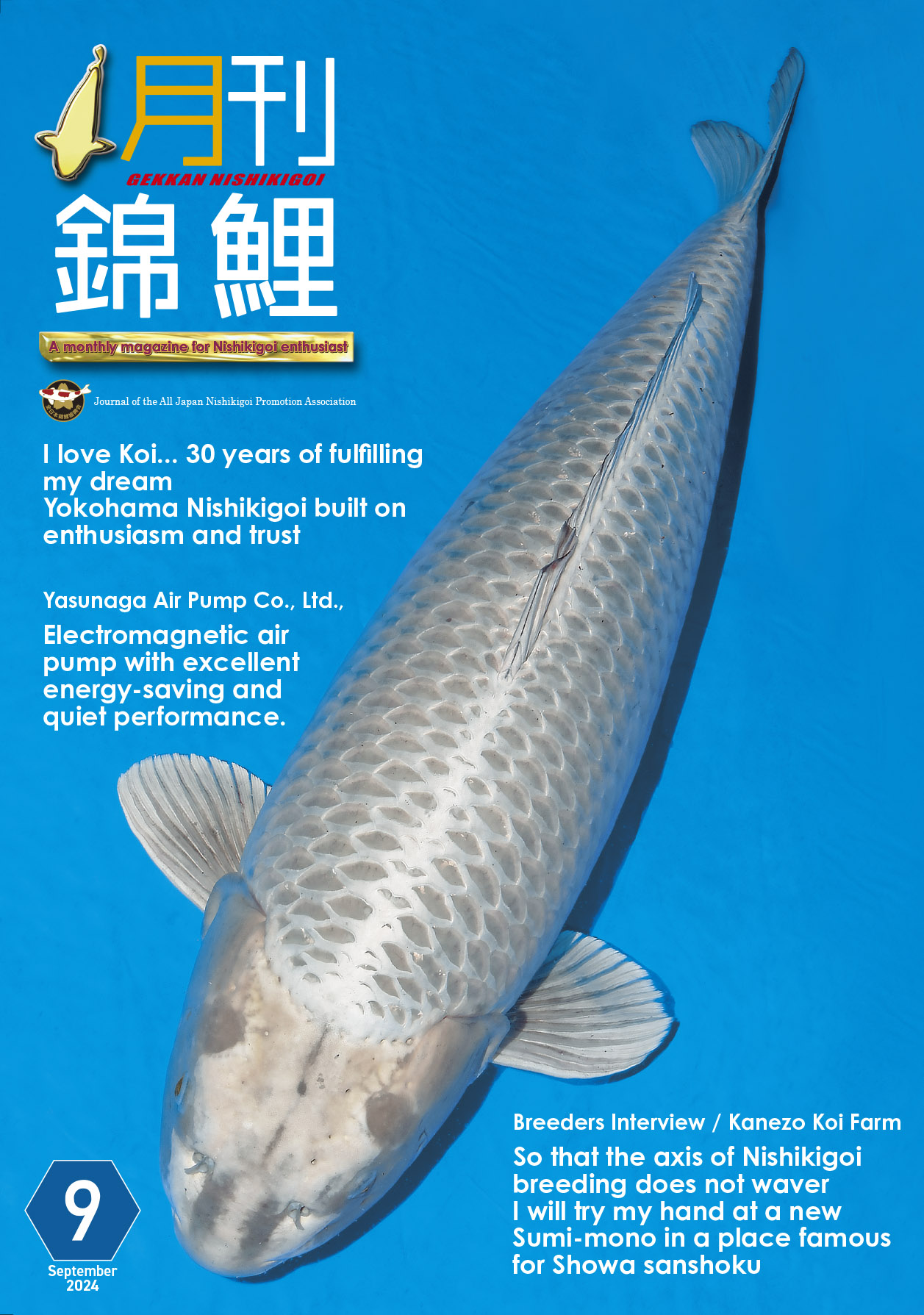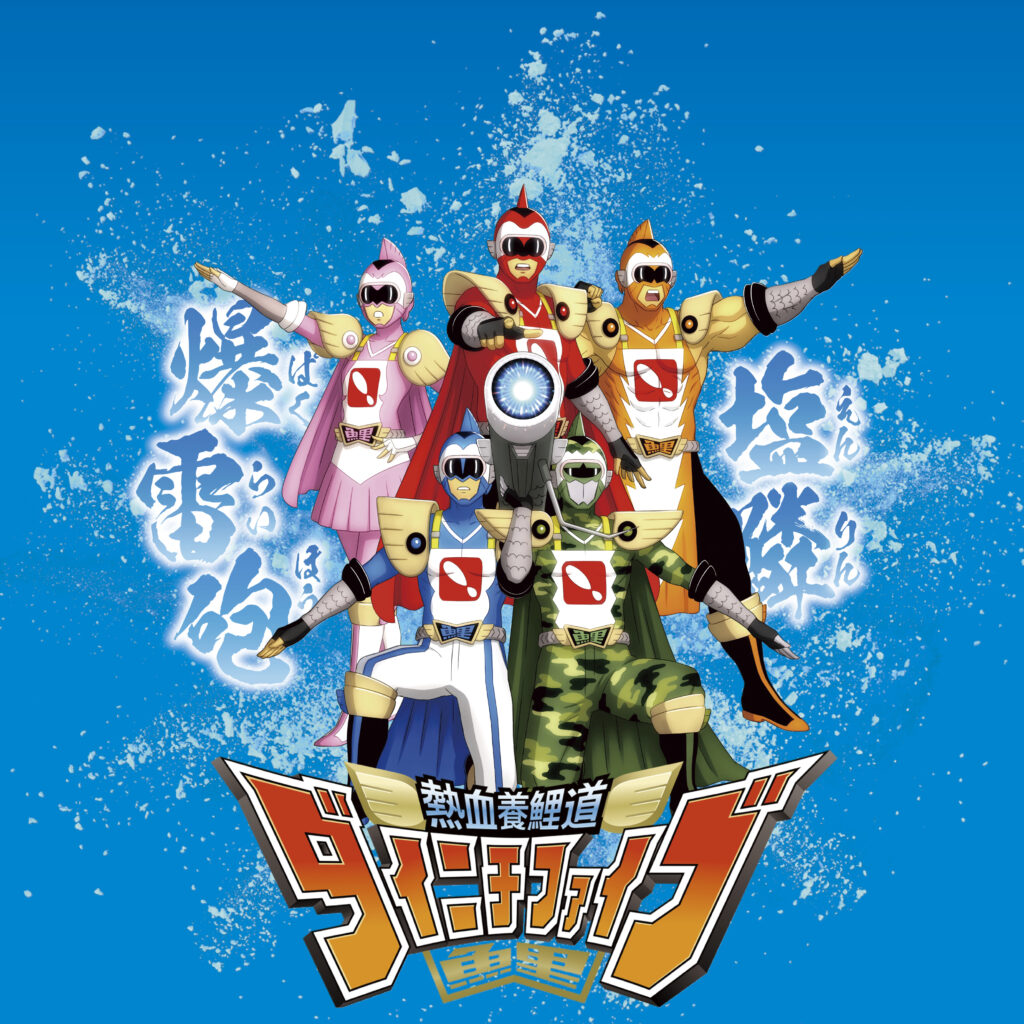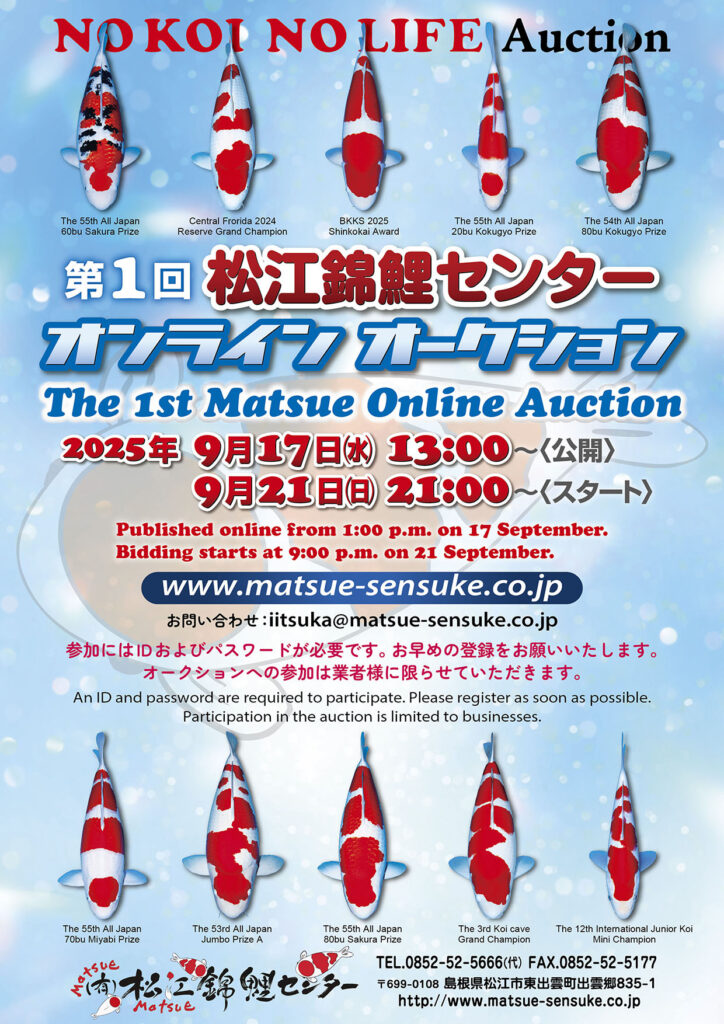NARITA KOI FARMS JAPAN THE NIIGATA PROJECT
Narita Koi Farms Japan (Komaki City, Aichi Prefecture), Japan’s largest koi distributor, announced plans this summer to build a large-scale greenhouse pond in Ogawara-machi, Nagaoka City, Niigata Prefecture.
This year, the farm has added to its impressive record of achievements, securing its tenth consecutive victory at the Nishikigoi All Japan Young Koi Show and claiming top honours at eleven International Junior Koi Shows. Always pushing forward, President Ryuki Narita spoke with us about the decision to establish the new facility in Niigata, the significance of operating dual bases in Aichi and Niigata, and the farm’s vision for the future.
― Narita Koi Farm has long operated out of Komaki City in Aichi Prefecture, but now you’re planning to build a large-scale greenhouse pond and other facilities in Niigata. This appears to be a significant turning point for the farm. What is the purpose behind establishing a new base in Niigata?
Ryuki: To create an environment better suited for koi keeping, we’ve been making do with limited facilities in Aichi, renovating and adapting them as we went along. So I had been looking for a new location for quite some time. Recently, I came across an excellent site in Okawara-machi, Nagaoka, and the water quality there is exceptionally good, even within the city.
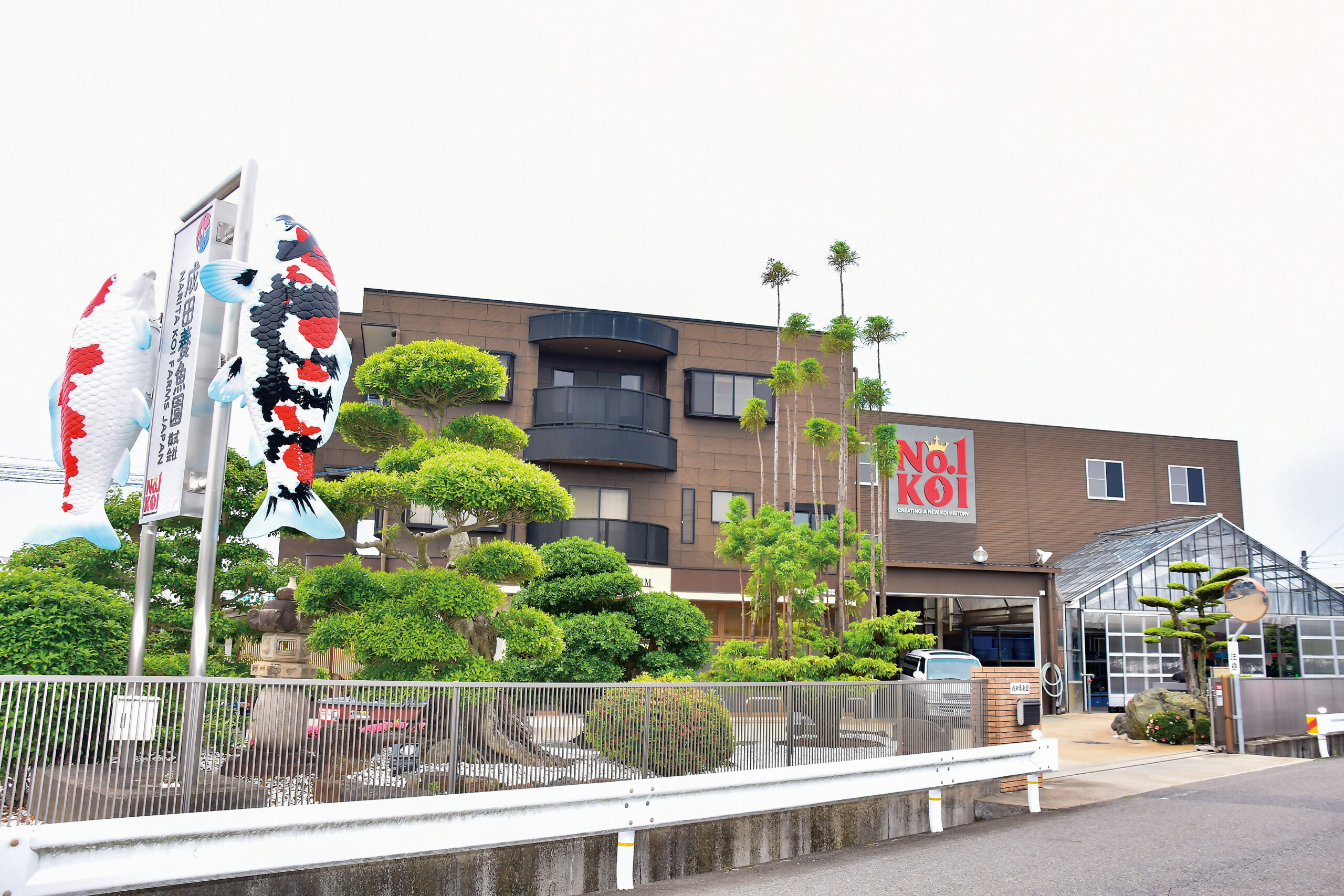
―Aichi and Niigata are pretty far apart, so at first glance, travelling between the two might seem difficult.
Ryuki: For various reasons, we’ve wanted to build a greenhouse pond in Niigata. Even now, we rent outdoor ponds there, and during the season, we transport koi from Aichi, which is quite a hassle both ways. With a greenhouse pond in Niigata, we’ll be able to leave the fish there directly, making things much more manageable.
―Considering the stress of transporting the koi, that makes a lot of sense.
Ryuki: Another reason we wanted to build the pond is to preserve the beauty of the koi when we introduce them. During the season, I spend about two months in Niigata buying koi every day. By October, the breeders are collecting koi from their mud ponds almost daily and adding more koi, so they can’t feed them as much as they would like. With a greenhouse pond, we can take a large batch of koi, place only as many as fit into a five-ton pond, disinfect them, and start feeding immediately. This allows us to maintain them in the absolute best condition right after they’re brought in, which makes our customers happy.
Even for tosai, it’s okay to keep a lot together, but as koi get older, the risk of their condition declining increases. For three- and four-year-olds, once their condition drops, it’s hard to recover. Keeping them in top shape ensures we can maintain their quality.
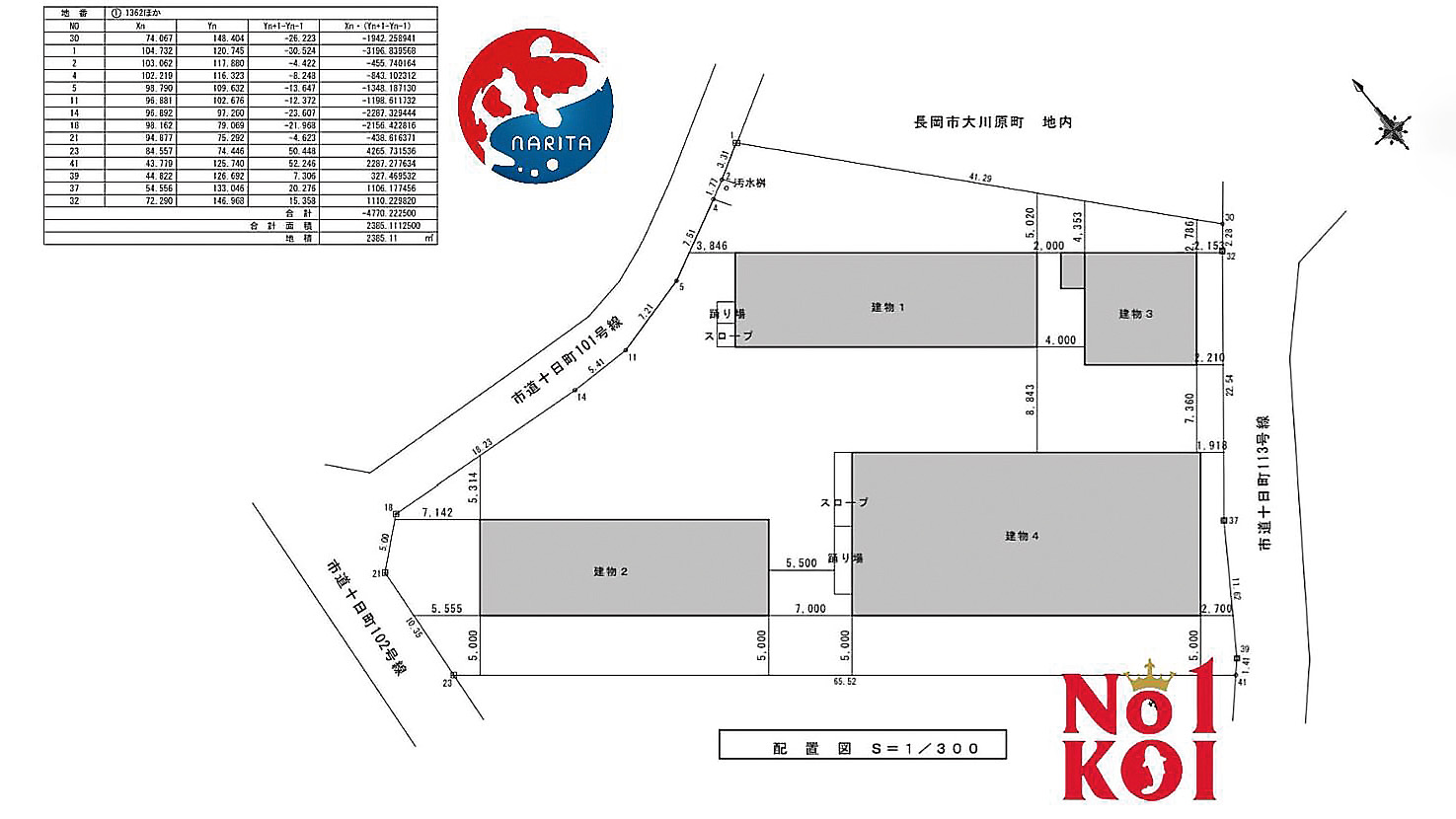
―I see. In that sense, the Niigata greenhouse pond was designed with a total of 48 ponds, opting for many smaller ponds rather than one large pond.
Ryuki: The most important thing is being able to stock koi separately by breeder. So we’ve designed the facility with 28 five-ton ponds, 10 fifteen-ton ponds, and 10 twenty-five-ton ponds. Honestly, building 28 five-ton ponds is extremely expensive. It’s much cheaper to create a single 30-ton or 100-ton pond. But if you mix koi from different environments, they’re more prone to disease, so we try to stock them from the breeder as much as possible.
―By keeping koi separated by breeder, you can reduce risks while creating an environment where you can feed them immediately. So having many small ponds gives you more flexibility. I understand that a residence will also be built on the site?
Ryuki: As I mentioned earlier, during the season I spend nearly two months in Niigata, and hotel costs add up. Having a residence here allows me to use it as a base and move around freely.
―With two greenhouse buildings, a warehouse, and a residence, this sounds like a major project. When is it expected to be completed?
Ryuki: Because it snows in Niigata, we can’t do construction work in winter, so we’re aiming to complete the project by October next year. The site previously featured an old house and several large trees, so we began removing and levelling them in June. Foundation work began in August. We plan to build one greenhouse this year and the second one next year, along with the warehouse and residence. Overall, the total site area will be approximately 2,640 m².
―With the recent surge in material costs, building greenhouses must be significantly more expensive now.
Ryuki: It’s incredibly costly. About one and a half times higher than a few years ago, and in some cases, even more.
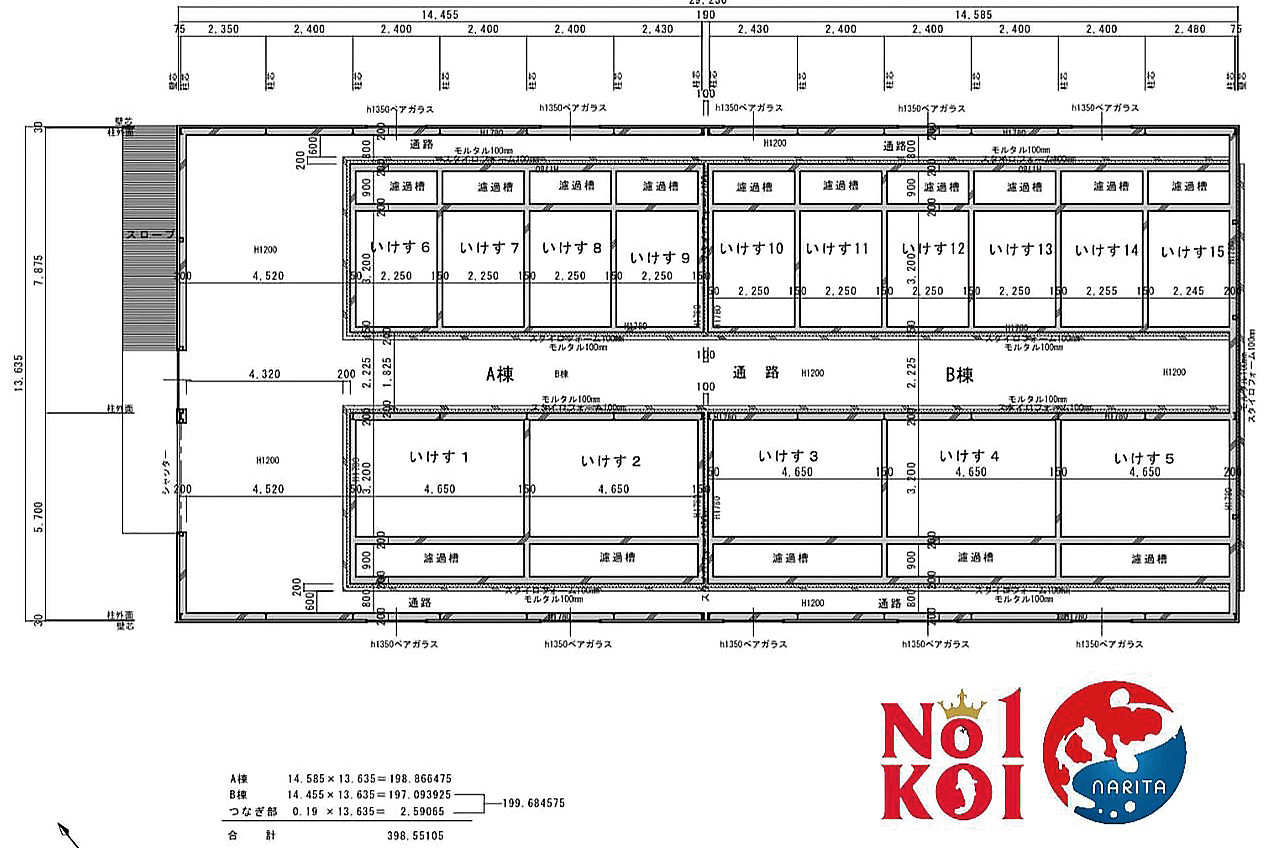
―You’re making such a significant investment in facilities to expand distribution and increase revenue, but there must also be some risks involved.
Ryuki: I don’t see it as a risk at all. For us, it simply means we can increase our koi stock. People often ask if having so many ponds makes management more difficult, but actually, it’s easier with more ponds. As a distributor, I purchase koi from a variety of breeders, and as I mentioned earlier, we keep koi separated by breeder. For example, some koi purchased in October for shows might not be mixed with others until the end of March, after the Nishikigoi All Japan Young Koi Show have concluded. That’s because we want to present them in the absolute best condition. If they were mixed with other koi during that period, their condition would suffer.
―Even with your level of expertise in koi keeping?
Ryuki: That’s impossible. Even for experienced breeders, if koi are collected from mud ponds and more koi are added continuously, their bodies can lose colour or their condition can decline. So, if you mix koi born in entirely different environments, their condition will almost certainly deteriorate. Whether the effect is minor or severe is another matter. So, if you were to mix them right before a major show, such as the All Japan Combined Nishikigoi Show, you can imagine what would happen.
―Once their condition deteriorates, it’s no longer just a matter of fine-tuning for shows.
Ryuki: That’s precisely why our koi have such a high success rate at koi shows. After the show season winds down, typically around the end of May, we take a week or two to gradually introduce koi, starting with test fish and carefully monitoring their condition. In summer, there’s enough time to help them recover. In that sense, I can never have too many ponds. Not having enough ponds often means I can’t purchase the koi I want.
―I see.

Ryuki: In October and November, we photograph the shiny koi that have been collected from mud ponds and show the images to our customers. But if they see the actual koi in February of the following year and think, “What is this? It’s a completely different koi,” their excitement drops. On the other hand, if the koi have grown and become even more beautiful, customers often want to buy another one.
It is essential, which is why, for me, this level of investment isn’t a risk or a downside. Sales will follow later. Fundamentally, my job is to keep the koi looking their best for as long as possible and provide them to customers in top condition.
―You’ve always been busy, but it seems like things will get even busier from here.
Ryuki: Honestly, taking on projects like this makes me feel more motivated and alive. If you stop, it feels like it’s over. Having responsibilities—like needing to repay a loan—gives you drive, and for me, it’s genuinely exciting. Besides, if there’s no buzz or new developments, people might forget about Narita Koi Farm (laughs).
―Is that so? (laugh)
Ryuki: What’s great about Niigata is that it attracts so many customers. With that many koi breeders there, its drawing power is incredible. In Aichi, honestly, very few customers come… in October, three groups a month is considered good. When we hold events, lots of people come, but otherwise, almost no one shows up. In Niigata, though, customers are constantly visiting—sometimes they have a little free time and decide to drop by here or there. Ideally, customers who see the Niigata greenhouse pond and have never visited us before will also come to Aichi, and that’s the best outcome.
―I see. So that’s part of the strategy as well.
Ryuki: During the season, I spend most of my time in Niigata, so it has to be worthwhile to do something there. Even if the investment can’t be recouped immediately, I believe it will move things in a positive direction. And if, by chance, this plan falls through, I’ll just rent out the greenhouse to breeders and collect rental fees (laughs).
―With completion scheduled for next year, things are really getting underway. When the facilities are finished, we look forward to introducing them in more detail.
